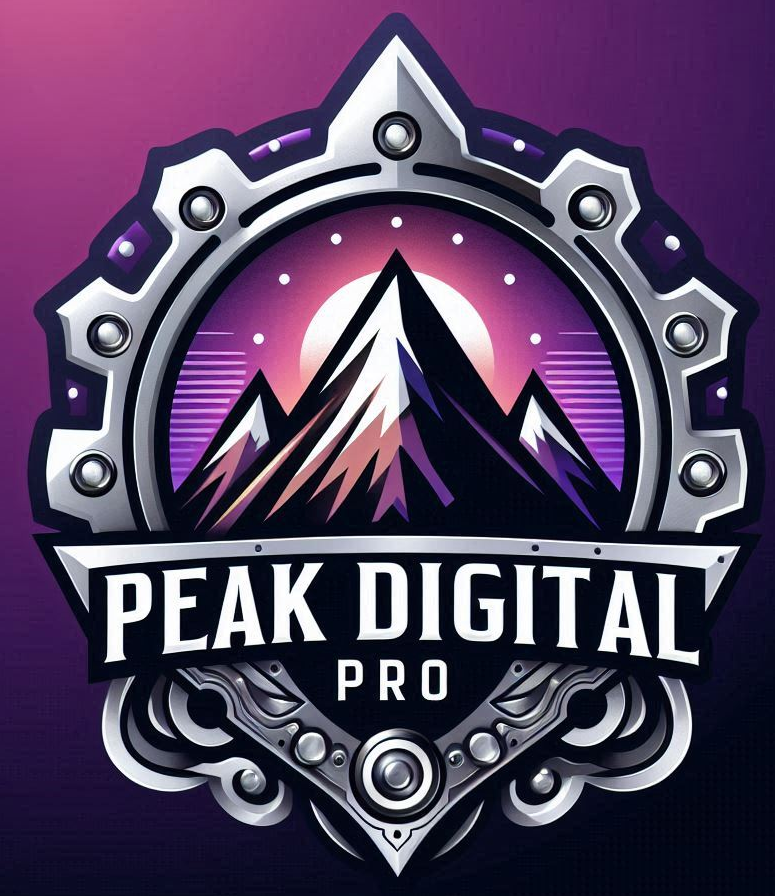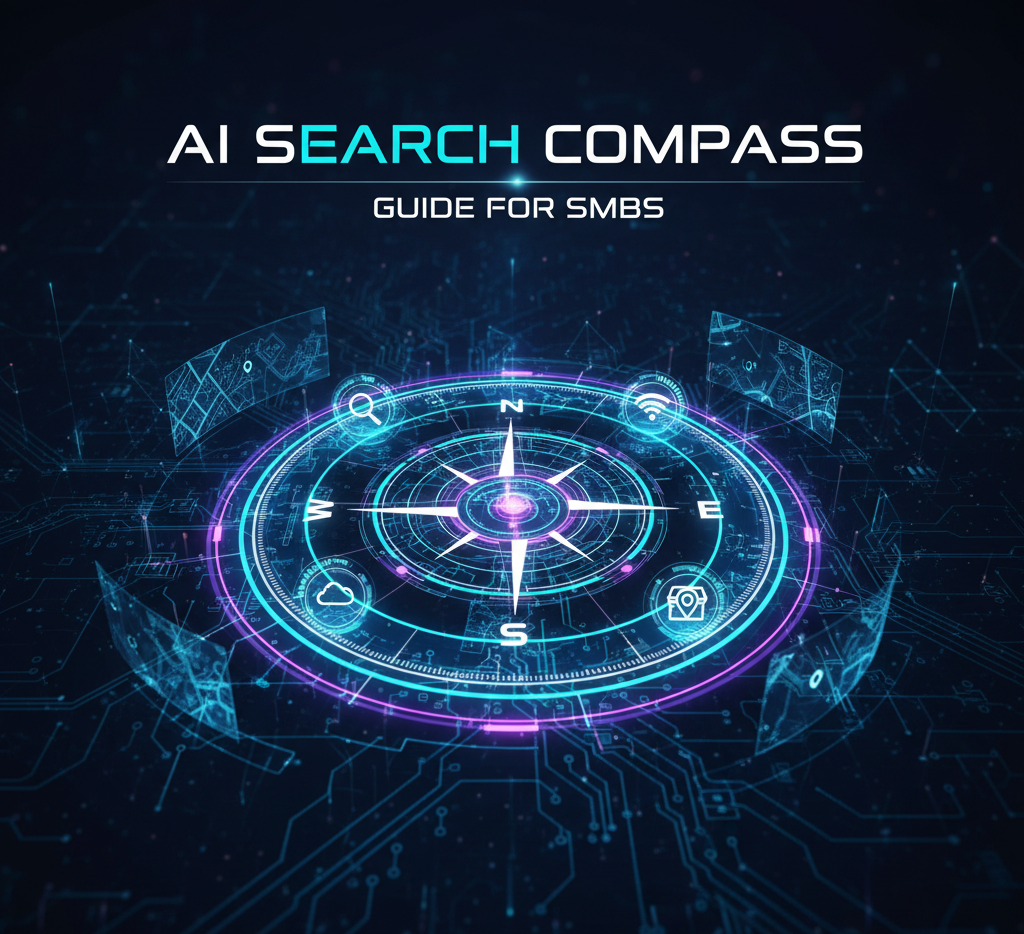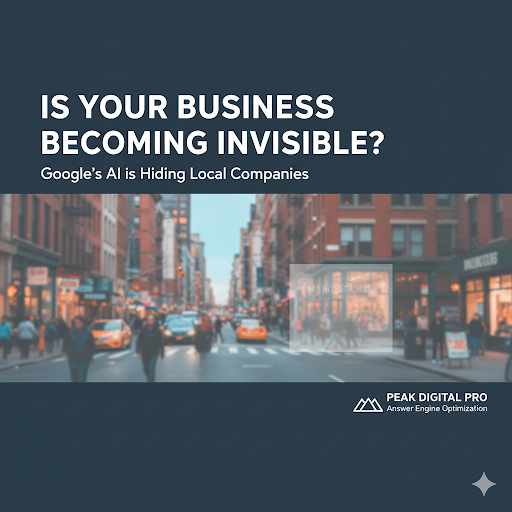Top Benefits of Digital Ads for US and Colorado Businesses 2025
Digital ads are powering business growth in ways few could imagine just a decade ago. Nearly 82% of small and medium-sized businesses now say personalized digital ads directly drive their revenue growth . This might sound like a tech trend only big brands can afford, but digital advertising is quietly leveling the playing field for small shops in Colorado and beyond. The real surprise comes from how precisely and affordably even the smallest business can reach its dream customers—opening doors that traditional marketing could never unlock.
Table of Contents
Quick Summary
| Takeaway | Explanation |
|---|---|
| Digital ads enhance market reach. | They enable businesses to target specific audiences, improving customer acquisition effectively. |
| Cost-effectiveness drives growth. | Digital ads deliver measurable results, allowing for budget optimization and high ROI. |
| Precision targeting maximizes efficiency. | Advanced techniques ensure that ads reach the right demographics for better engagement and reduced waste. |
| Continuous learning improves advertising. | Real-time analytics enable businesses to adapt their strategies based on audience behavior and performance. |
| Emerging tech will shape the future. | AI and new advertising platforms are transforming how businesses interact with consumers, enhancing personalization efforts. |
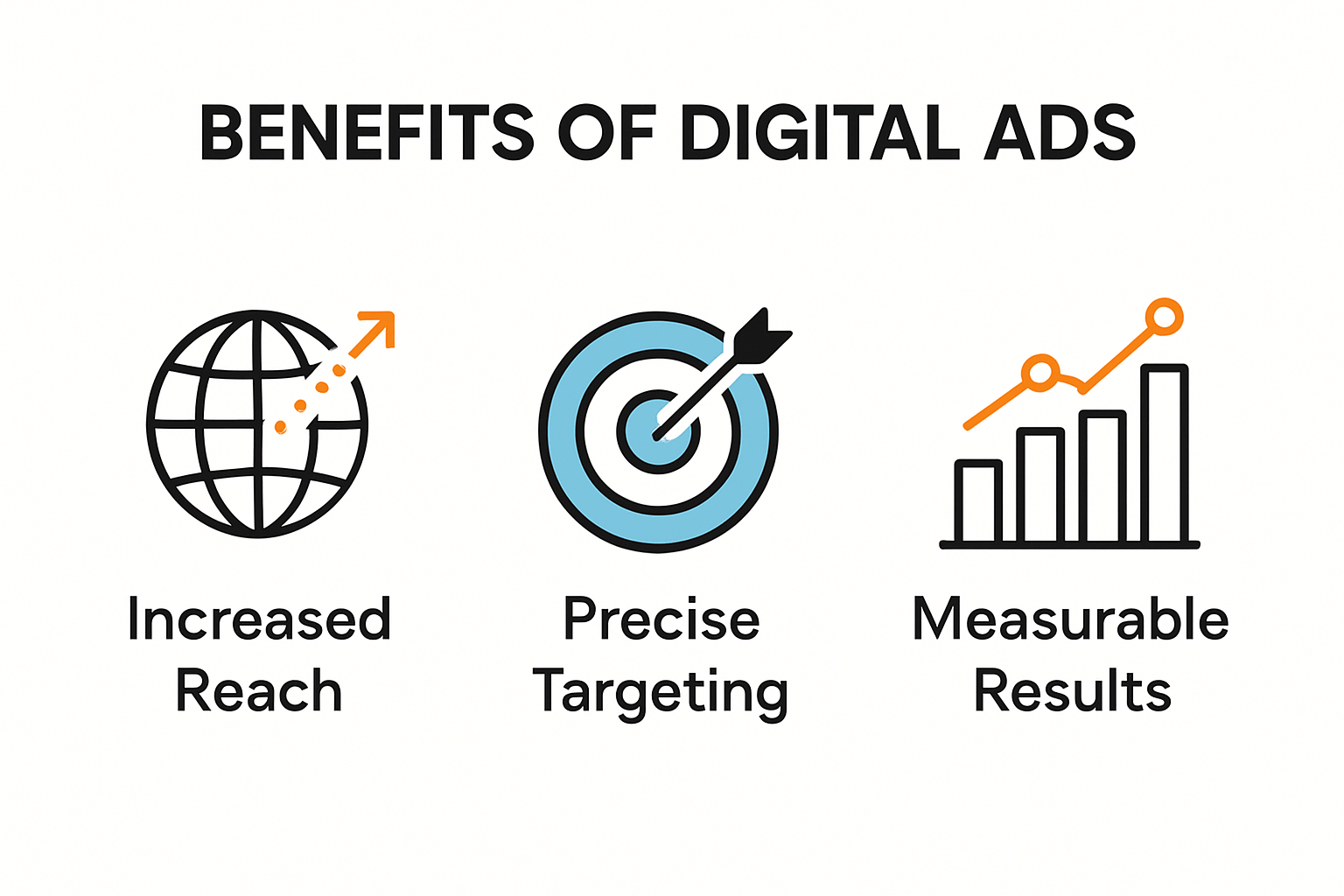
Why Digital Ads Matter for Business Growth
Digital advertising has become a critical strategy for businesses seeking sustainable growth and competitive advantage. The modern marketplace demands sophisticated approaches to reaching potential customers, and digital ads provide unparalleled opportunities for targeted engagement and measurable results.
Expanding Market Reach and Customer Acquisition
Businesses today face unprecedented challenges in capturing audience attention. The Connected Commerce Council survey reveals a compelling statistic: 82% of small and medium-sized businesses directly attribute their revenue growth to personalized digital ads. This powerful insight underscores the transformative potential of strategic digital advertising.
Digital ads enable businesses to transcend traditional geographic limitations. Unlike traditional advertising methods, online platforms allow companies to target specific demographics, interests, and behaviors with unprecedented precision. Targeted advertising means your marketing budget is spent more efficiently, reaching individuals most likely to convert into paying customers.
Cost-Effective Marketing with Measurable Results
The U.S. Chamber of Commerce highlights that digital marketing offers cost-effective solutions with high return on investment. Traditional advertising often involves significant upfront costs with uncertain outcomes. In contrast, digital ads provide real-time tracking, allowing businesses to monitor performance, adjust strategies instantly, and optimize spending.
Businesses can now track key performance indicators like click-through rates, conversion rates, and customer acquisition costs with remarkable accuracy. This data-driven approach enables continuous improvement and more intelligent marketing investments. Remarkably, 69% of businesses use digital ads specifically to acquire new customers, demonstrating the strategy’s direct impact on growth.

Strategic Advantages in a Digital Ecosystem
Adobe’s research emphasizes that digital marketing provides global reach, cost efficiency, and effective targeting. The digital advertising ecosystem offers businesses unprecedented flexibility. Whether you’re a local Colorado startup or an established national brand, digital ads can be scaled and customized to match your specific business objectives.
The ability to segment audiences, retarget interested customers, and create personalized ad experiences means businesses can develop more meaningful connections. Digital advertising is not just about visibility—it’s about creating relevant, engaging interactions that drive genuine business growth.
For businesses looking to thrive in an increasingly competitive marketplace, digital ads are no longer optional. They represent a fundamental strategy for connecting with potential customers, understanding market dynamics, and driving sustainable revenue growth. The data is clear: businesses that embrace digital advertising position themselves for success in the modern economic landscape.
To clarify the main advantages of digital versus traditional advertising methods discussed above, the following table summarizes key differences for small and medium-sized businesses:
| Feature | Traditional Advertising | Digital Advertising |
|---|---|---|
| Audience Targeting | Broad, often unsegmented | Highly specific, multi-dimensional |
| Upfront Costs | High | Scalable, low minimums |
| Performance Tracking | Limited, delayed | Real-time, detailed |
| Geographic Reach | Local or regional | Global or precisely local |
| Flexibility & Customization | Limited | Dynamic, easy to adjust |
| Budget Optimization | Difficult to measure and optimize | Direct data-driven optimization |
Cost-Effective Advertising for Local and National Markets
Digital advertising represents a revolutionary approach to marketing that democratizes promotional opportunities for businesses of all sizes. Unlike traditional advertising channels with fixed, expensive rates, digital platforms provide flexible, scalable solutions that transform how companies invest in their marketing strategies.
Breaking Down Cost Barriers for Small Businesses
The FCC reports that digital advertising enables businesses in diverse regions to reach both local and national markets with unprecedented cost efficiency. Small businesses can now compete with larger enterprises by leveraging targeted digital advertising technologies that were previously inaccessible.
Traditional advertising methods like television, radio, and print media require substantial upfront investments with limited audience targeting. Digital platforms, by contrast, allow businesses to set precise budget constraints, track real-time performance, and adjust campaigns instantaneously. Micro-targeting capabilities mean every advertising dollar is strategically allocated, reducing waste and maximizing potential returns.
Strategic Budget Optimization
The Congressional Budget Office analysis highlights how digital advertising technologies dramatically improve spending efficiency. Businesses can now implement sophisticated targeting strategies that ensure ads reach the most relevant audience segments, thereby reducing unnecessary expenditure.
Digital advertising platforms offer granular control over spending. Entrepreneurs can start with modest budgets as low as $5-$10 per day and scale up based on performance metrics. This approach allows businesses to experiment, learn, and optimize their advertising strategies without risking significant financial resources.
Advanced Targeting and Cost Management
Modern digital advertising platforms provide comprehensive tools for precise audience segmentation. Businesses can target potential customers based on demographics, interests, online behaviors, geographic location, and even specific purchasing intent. This level of specificity ensures that advertising budgets are invested with maximum strategic efficiency.
Advanced analytics enable businesses to track key performance indicators in real-time. Metrics like cost per click, conversion rates, and return on ad spend provide immediate insights into campaign effectiveness. Such data-driven approaches allow continuous refinement of marketing strategies, ensuring that businesses consistently improve their advertising efficiency.
For Colorado businesses and national brands alike, digital advertising represents more than a marketing channel—it’s a strategic investment in growth. By leveraging cost-effective digital platforms, companies can reach their ideal customers with unprecedented precision, transforming how they compete and expand in an increasingly digital marketplace.
The table below compiles key cost advantages and features that digital advertising provides to businesses, as described in this section:
| Advantage | Traditional Advertising | Digital Advertising |
|---|---|---|
| Minimum Budget Requirement | High (thousands) | Low (as little as $5–$10/day) |
| Spending Flexibility | Fixed placements, inflexible | Adjust in real time, fully flexible |
| Targeting Precision | Limited | Micro-targeting by many variables |
| Performance Measurement | Delayed, minimal detail | Real-time KPIs and detailed tracking |
| Scalability | Challenging, costly | Easy, scalable up or down |
Targeting and Measuring Success With Digital Ads
Digital advertising has revolutionized how businesses connect with potential customers by offering unprecedented precision in audience targeting and comprehensive performance measurement. Unlike traditional marketing approaches, digital platforms provide sophisticated tools that enable businesses to reach exactly the right people at the right time.
Precision Audience Targeting Strategies
Google’s Marketing Research demonstrates that successful digital advertising relies on advanced audience segmentation techniques. Businesses can now target potential customers with incredible specificity, using parameters like age, location, interests, online behavior, and purchasing history.
These targeting capabilities allow for hyper-personalized advertising experiences. For instance, a local Colorado bakery can target ads to individuals within a specific geographic radius who have shown interest in baking, cooking, or local food experiences. This level of precision ensures that marketing resources are focused on the most promising potential customers.
Advanced Performance Analytics
The Interactive Advertising Bureau highlights the critical importance of comprehensive performance tracking in digital marketing. Modern digital advertising platforms provide real-time metrics that go far beyond traditional measurement approaches. Businesses can now track detailed performance indicators such as impressions, click-through rates, conversion rates, and return on ad spend.
These analytics enable businesses to make data-driven decisions. By understanding exactly how each advertisement performs, companies can continuously optimize their marketing strategies. This means rapidly adjusting targeting parameters, refining ad creative, and allocating budget to the most effective channels.
Continuous Optimization and Learning
Digital advertising is not a static process but a dynamic, adaptive strategy. The advanced tracking and measurement tools available today allow businesses to implement a continuous improvement approach to their marketing efforts. Each campaign provides valuable insights that can be immediately applied to future advertising initiatives.
For example, if an initial ad campaign shows higher engagement among women aged 35-45 in urban areas, a business can quickly refine its targeting to focus on this demographic. This agile approach means marketing strategies can evolve in near real-time, responding to actual audience behaviors and preferences.
The power of digital advertising lies not just in its reach, but in its ability to provide immediate, actionable intelligence. Businesses that embrace these sophisticated targeting and measurement tools gain a significant competitive advantage. They can make informed decisions, reduce wasted marketing spend, and create more meaningful connections with potential customers.
For Colorado businesses and national brands alike, mastering digital ad targeting and measurement is no longer optional—it’s a fundamental requirement for successful modern marketing. The ability to precisely reach the right audience and understand exactly how your advertising performs represents a transformative approach to business growth.
Trends in Digital Advertising for 2025
The digital advertising landscape is rapidly evolving, driven by technological innovations and changing consumer behaviors. As we approach 2025, businesses must understand and adapt to emerging trends that will reshape how marketing strategies are developed and implemented.
AI-Powered Advertising Transformation
PwC’s Global Entertainment & Media Outlook reveals a significant shift in digital advertising, with digital formats projected to constitute 80% of ad revenue by 2029. Artificial intelligence is driving this transformation, enabling more sophisticated, personalized advertising experiences.
Generative AI is particularly revolutionary in content creation. The IAB’s Digital Video Ad Spend Report indicates that 86% of advertisers are already using or planning to implement generative AI technologies. This trend is especially powerful for small and mid-sized businesses, offering cost-effective methods to produce high-quality, targeted advertising content.
Economic Considerations and Digital Ad Spending
WPP Media’s global advertising forecast provides insight into the broader economic context of digital advertising. Despite some economic uncertainties, digital advertising remains robust, expected to represent 73.2% of the projected $1.08 trillion global ad revenue in 2025.
Businesses must recognize that digital advertising is no longer just an option but a critical strategy for growth. The ability to quickly adapt to technological changes, leverage AI-driven insights, and create personalized advertising experiences will distinguish successful marketers from their competitors.
Emerging Technologies and Consumer Engagement
Connected TV advertising represents another significant trend, with projected ad revenues reaching $51 billion. This indicates a continued shift towards more integrated, multi-platform advertising strategies. Consumers increasingly expect personalized, contextually relevant advertising experiences that seamlessly blend across different digital platforms.
The most successful businesses in 2025 will be those that can effectively combine advanced technologies like AI, machine learning, and data analytics to create more intelligent, responsive advertising strategies. This means going beyond traditional targeting to develop truly predictive and adaptive marketing approaches.
For Colorado businesses and national brands, staying ahead of these digital advertising trends is not just about technological adoption—it’s about understanding the fundamental shifts in how consumers interact with digital content. The future of advertising is intelligent, personalized, and increasingly powered by advanced technologies that can understand and anticipate customer needs with unprecedented precision.
The following table summarizes important digital advertising statistics and forecasts highlighted in this section to provide a concise overview of 2025 industry trends:
| Metric / Trend | 2025 Value / Projection | Source / Note |
|---|---|---|
| Share of businesses crediting digital ads | 82% | Connected Commerce Council |
| Businesses using digital ads to acquire users | 69% | U.S. Chamber of Commerce |
| Global digital ad revenue share (2025) | 73.2% of $1.08T (ad market) | WPP Media forecast |
| Digital ad revenue share (2029 projection) | 80% | PwC Global Entertainment & Media |
| Advertisers using/planning generative AI | 86% | IAB Digital Video Ad Spend Report |
| Connected TV ad revenues (projected) | $51B | Industry forecasts |
Frequently Asked Questions
What are the main benefits of digital ads for businesses in 2025?
Digital ads provide enhanced market reach, cost-effective marketing with measurable results, precision targeting, and continuous optimization, making them essential for business growth.
How do digital ads compare to traditional advertising methods?
Digital ads allow for highly specific audience targeting, real-time performance tracking, and budget flexibility, unlike traditional methods that often involve significant upfront costs and limited audience insights.
Why are personalized digital ads important for small businesses?
Personalized digital ads help small businesses directly connect with their target audience, leading to higher conversion rates and improved overall revenue growth.
What trends should businesses be aware of in digital advertising for 2025?
Key trends include the rise of AI-powered advertising, the importance of connected TV advertising, and the growing need for personalized consumer engagement strategies.
Unlock Real Business Growth With Proven Digital Ads
Are you struggling to reach the right customers and tired of wasting your advertising budget with little return? This article highlighted how US and Colorado businesses like yours are transforming brand visibility and revenue using advanced digital ads. The challenge many business owners face today is making every marketing dollar count while cutting through the competition. Staying ahead with precision targeting, real-time analytics, and cutting-edge strategies is critical when you want sustainable growth.
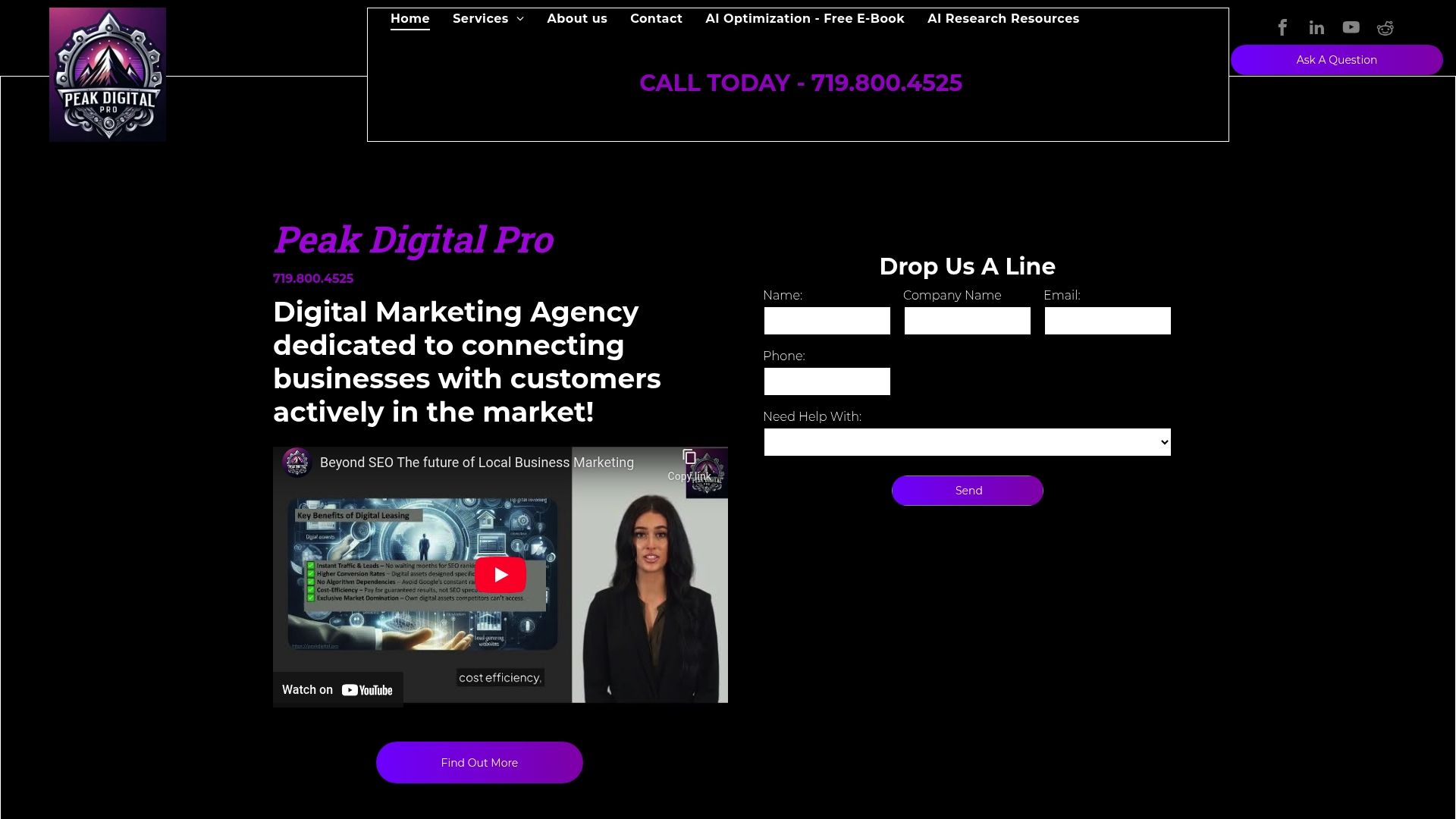
Peak Digital Pro helps you put these powerful tactics into action. As a premier Colorado Springs digital marketing firm, we combine expert insight with the latest AI-driven technologies to turn your goals into measurable results. Let us help you break cost barriers, tap into targeted local and national audiences, and optimize every campaign for maximum impact. Visit Peak Digital Pro now to discover how our personalized web development, SEO, and state-of-the-art digital marketing solutions can help you outpace competitors. Ready to expand your reach and unlock new sales growth? Connect with our team today and start building the market leadership you deserve.
